Memorial Art and Architecture on Civil War Battlefields
by Michael W. Panhorst
Even as the Civil War raged, soldiers began erecting monuments where they fought and buried the dead. Monuments raised before the 25th anniversary of the war were funereal in character. Those raised between the 25th and 50th anniversaries memorialized the fallen as well as the survivors on the ground where they displayed their courage, and a few reflect the sectional reconciliation that was occurring nationwide—fostered in part by the formation of national military parks and joint veteran reunions held on the fields. However, the skin color of all of those commemorated was white. The first battlefield monument to African Americans was erected at Vicksburg in 2004. By the dedication of the Eternal Light Peace Memorial at Gettysburg in 1938, most of the white Union troops who had served on the major battlefields had been commemorated with markers or monuments, and the popular perception of the war had evolved to one that recognized it not as the culmination of the nation’s division over slavery or states’ rights, but the cauldron in which the nation was reunited for all time. Twenty-five years later, during the Centennial of the war several southern states finally found the incentive and funding to build memorials to their sons who had earlier fought the federal government in a lost cause. On the eve of the sesquicentennial, a few memorials were placed for individuals and groups whose service had not been properly commemorated in the past. The common thread that ties together these thousands of Union and Confederate memorials erected over the course of 150 years is the concept of site-specific commemoration. The art and architecture of Civil War battlefield monuments memorialize the courage and sacrifice of soldiers and the resultant reunification of the nation on the ground where these soldiers fought and died for their respective ideals of freedom. Many provide vivid images that illustrate as well as commemorate the heroism. Some personify cultural ideals such as War, Peace, Liberty, Patriotism, Fame, Victory, Duty, Diligence, Fortitude, Reconciliation, and History itself. All the monuments were designed, constructed, and dedicated “Lest We Forget” the soldiers and the consequences of their courage.
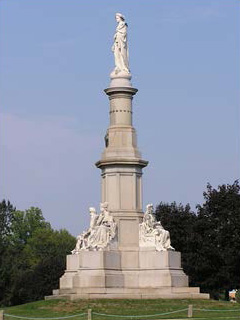
Even as the Civil War raged, soldiers erected monuments to mark where they fought and where their comrades were buried (figs. 1 and 2). After Appomattox, veterans, families, and friends of Union fatalities commemorated their “last full measure of devotion” by raising funerary memorials in new national cemeteries on major battlefields (figs. 3 and 4). At Gettysburg, construction of Gettysburg National Cemetery fostered formation of the Gettysburg Battle Field Memorial Association to preserve the Union lines. Following the twenty-fifth anniversary of the war, ageing veterans successfully lobbied the federal government to purchase vast acreage at Gettysburg, Vicksburg, Chickamauga-Chattanooga, Shiloh, and Antietam, and to map and mark Confederate as well as Union positions (fig. 5). The states then funded thousands of memorials, many by America’s best artists (fig. 6), and additional battlefields were protected and marked over subsequent years.
By the war’s fiftieth anniversary, veterans began to erect memorials whose iconography recognized the sectional reconciliation that creation of the parks had promoted (fig. 7). The seventy-fifth anniversary witnessed dedication of the Eternal Light Peace Memorial at Gettysburg (fig. 8). During the Centennial, some southern states that had been reluctant to mark fields where, with the exception of Chickamauga, they had suffered defeat, took the opportunity to raise battlefield monuments (fig. 9). On the eve of the war’s sesquicentennial, still more monuments were placed (fig. 10).
Despite the perennial popularity of the Civil War, recent interest in the study of collective memory, and celebration of the Civil War sesquicentennial, few scholars have asked why and how Civil War battlefield monuments were built, what they mean, and why they are important. This paper addresses those issues.
Why were Civil War battlefield monuments built?
The earliest monuments were meant to mark spots where soldiers were killed and/or buried (fig. 11). Thus, they are funereal in character, resembling obelisks, columns, and shafts erected in cemeteries at that time. The marble post placed where Confederate Colonel Francis Stebbins. Bartow was shot during First Manassas was erected within six weeks of the battle, but due to vandalism nothing remained of it by March of 1866 except the base, which is still at Manassas (fig. 12). Five of the half-dozen other battlefield memorials built before July 1865 commemorate those who gave their lives for their country (fig. 13). Only the Surrender Interview Site Monument (fig. 14) dedicated at Vicksburg in 1864 is something other than a mortuary or grave marker.
Dozens of Union monuments raised at Gettysburg around its 25th anniversary commemorate casualties while simultaneously celebrating the heroic service of survivors (fig. 15). The Union victors soon began to notice the absence of memorials to their adversaries, and this led to the formation in 1890 of the first national military park, which commemorates the 1863 battles of Chickamauga and nearby Chattanooga (fig. 16). Chickamauga and Chattanooga and all subsequent national military parks were envisioned to have markers and monuments for both Union and Confederate forces.
Monuments placed between the 25th and 50th anniversaries carry on the tradition of memorializing the fallen and the survivors on the ground where they displayed their courage (fig. 17), and a few reflect the sectional reconciliation that was occurring nationwide—fostered in part by the formation of national military parks and joint veteran reunions held on the fields (fig. 18). At a time when sons of Union soldiers and sons of Confederate soldiers were fighting shoulder to shoulder in the Spanish-American War, “American” courage and valor were recognized and celebrated on Civil War battlefields regardless of the color of the soldiers’ uniforms. However, the skin color of all of those commemorated was white. African Americans were largely absent from Civil War battlefields between the Civil War and the Civil Rights Movement. The first battlefield monument to African Americans was erected at Vicksburg in 2004 (fig. 19).
By the dedication of the Eternal Light Peace Memorial at Gettysburg in 1938 (fig. 20), most of the white troops who had served on the major battlefields had been commemorated with markers or monuments, and the popular perception of the war had evolved to one that recognized it not as the culmination of the nation’s division over slavery or states’ rights, but the cauldron in which the nation was reunited for all time. Twenty-five years later, during the Centennial of the war, which ironically coincided with the Civil Rights Movement, several southern states finally found the incentive and funding to build memorials to their sons who had earlier fought the federal government in a lost cause (fig. 21). On the eve of the sesquicentennial, a few memorials were placed for individuals and groups whose service had not been properly commemorated in the past (fig. 22). Now there are moratoria on new monuments at Gettysburg, Vicksburg, and Antietam.
How were these memorials designed and built?
Most monuments made during the war were worked by stone cutters and masons in the ranks who used stone found in the vicinity of the monument sites (fig. 23). Soldiers National Monument in the national cemetery at Gettysburg (fig. 24), whose cornerstone was laid July 4, 1865, was dedicated in 1869 with only three of the five marble statues from Randolph Rogers’ Italian studio ornamenting a granite shaft from New England (fig. 25). The American Soldier (fig. 26), a 22-foot tall granite monolith from Westerly, RI, was commissioned in 1867. It was exhibited at the Centennial Exposition, where it contributed to the popularity of Sentinel or Parade Rest Soldier iconography for memorials in cemetery and civic settings; however, that influence has been overlooked by scholarly focus on contemporaneous prototypes for Sentinels by Randolph Rogers, John Quincy Adams Ward, and Martin Milmore. The American Soldier was dedicated in Antietam National Cemetery in 1880 and remains the largest and one of the most impressive Sentinels in the country—a fitting tribute to America’s Bloodiest Day when 22,717 American soldiers were killed, wounded, or missing. The monument, however, commemorates only the 2,108 Union fatalities, about half of the 3,654 Americans killed on September 17, 1862.
With the exception of the Italian marble statuary on Soldiers National Monument (fig. 27) and half a dozen bronzes cast in Germany and Italy, all of the memorial art and architecture on Civil War battlefields was made in America with American materials. During the golden age of battlefield monument dedications by veterans between the establishment of the first parks and the 50th anniversaries of Gettysburg and Vicksburg, steam-powered derricks helped harvest the granite used for statuary, pedestals, and other architectural components of battlefield monuments (fig. 28). Steam locomotives moved the stone to cutting sheds where steam and later gas and electric-powered pneumatic tools were used to shape and incise the stone (fig. 29). Prior to these innovations, granite had proven too obdurate to carve into statuary economically. Ships, railroads, trucks, and draft animals (fig. 30) transported the art and architecture to the battlefields, where it was set with traditional methods and modern machinery (fig. 31). An impressive collection of granite statues of active soldiers dating from the turn of the 20th century, when the American monument industry was unsurpassed for its craftsmanship, stands at Antietam.
Foundries first used sand molds and then employed the lost wax technique to cast durable bronzes finished in a variety of traditional patina colors (fig. 32). In the late twentieth century, ceramic shell mold-making technology displaced earlier methods and the traditional “85-3-5” alloy of “monumental” bronze (85% copper, 5% lead, 5% tin, and 5% zinc) was all but abandoned in favor of a more ductile and forgiving silicon bronze that contains no hazardous lead. The wider variety of patinas developed in the past three decades has appeared on the battlefields at Shiloh and Gettysburg (fig. 33).
During the golden age of Civil War battlefield monuments, veterans’ groups and state monument commissions coordinated most of the memorials, which were primarily funded with state appropriations. This was a continuation of military funding patterns during the war. The states had recruited and financed regiments, so it was logical for each of the states to honor its own sons’ service. Because of the impact of the war, northern states generally erected earlier and larger memorials than southern states. Most commissions selected designs and contractors through calls for proposals or open competitions. Architects, sculptors, and monument companies designed and built the structures, often collaborating with each other, especially during the golden age of battlefield monuments, when Beaux-Arts aesthetics dominated memorial art and architecture in the U.S. (figs. 34-36).
The meaning and importance of Civil War battlefield monuments
As we have seen, early funerary memorials commemorate the dead where they fell or were buried (fig. 38). They remember those who gave the “last full measure of devotion” “not for themselves, but for their country.” Late-nineteenth-century service memorials recognize the courage of casualties and survivors alike, usually with dramatic compositions related to the action that occurred on that spot. [1]
One of the best examples is the statue of Major General Gouverneur Kemble Warren (fig. 39), which in 1888 was mounted directly on the enormous rock outcropping where the Union chief of engineers stood briefly on the second day of the battle of Gettysburg. While reconnoitering the high ground overlooking the Union lines, he saw light glinting off guns of Confederate troops approaching the undefended heights and quickly commandeered troops to hold Little Round Top. Appropriately, the figure of Warren turns his head and lifts his binoculars (fig. 40), silently capturing the dramatic moment in a fashion that was popular with American and European sculptors of the day. Earlier in the 1880s, August Rodin had considered sinking the socles of his Burghers of Calais in the sand of the town square that the 14th-century martyrs crossed en route to what they thought would be their deaths. But the 19th-century burgers insisted on a tall pedestal. Warren may be the first site-specific monumental bronze to be set without a base—an important first in the history of modern art.
About a mile from Warren stands another late-nineteenth-century service memorial that commemorates an entire regiment in dramatic and effective fashion. Within hours of General Warren’s fateful action, the men of the First Minnesota regiment were called into action to fill a crucial gap in the Union line on Cemetery Ridge. Although most of those 262 men realized that they were being ordered on a suicidal mission, they fixed bayonets and charged, effectively halting the Confederate attack. Within minutes, the First Minnesota lost 215 men killed or wounded, 83% of the regiment. The monument’s inscription (fig. 41) states, “In self-sacrificing desperate valor this charge has no parallel in any war,” and most historians accept that claim. Consequently, this statue by Jacob Felde depicting Minnesotans engaged in the action that earned them fame and glory—standing on the sacred ground where they displayed their selfless heroism—communicates the meaning of the memorial more effectively than a less site-specific composition, and more emphatically than the same sculpture installed in St. Paul or any other location.
Around 1913, three prominent memorials featured iconography that reflects the growth of sectional reconciliation. Two (fig. 42) picture Union and Confederate soldiers shaking hands. One (fig. 43) utilizes a Nike figure carrying fasces to symbolize strength in unity and an olive branch to signify peace. The Eternal Light Peace Memorial at Gettysburg (fig. 44) was proposed in 1913, but was not built until the 75th anniversary of the battle.
Southern memorials dedicated during and since the Centennial represent the delayed efforts of ex-Confederate states to recognize the valor of their ancestors while simultaneously commemorating the patrons’ own rebellious cultural roots during times when resistance to federal authority enjoyed enthusiastic support among vocal sub-cultures (fig. 45).
The common thread that ties together these thousands of Union and Confederate memorials erected on five far-flung battlefields over the course of 150 years is the concept of site-specific commemoration. The art and architecture of Civil War battlefield monuments memorialize the courage and sacrifice of soldiers and the resultant reunification of the nation on the ground where these soldiers fought and died for their respective ideals of freedom—the same ground where Union and Confederate veterans buried the hatchet in joint reunions long after the war (fig. 46). Unlike any monuments to these men placed in their home towns, Washington, or Richmond, battlefield monuments are melded to the historic sites where the heroic events occurred. In comparison, portraits of individual heroes or group memorials in civic settings far from the battlefields are like cenotaphs that commemorate the dead but do not contain their remains. There is an inherent distance of time and space between Civil War monuments in civic settings and their subjects that is not characteristic of battlefield monuments. Battlefield monuments memorialize the heroic deeds of soldiers and mark the historic sites where those events occurred. This dual duty of battlefield monuments (fig. 47) doubles their impact and enhances the poignancy of these portrayals.
Why are Civil War battlefield monuments important today?
There are several reasons why Civil War battlefield monuments are important today. They memorialize the courage of soldiers who fought and died, and they mark the historic sites where those events occurred. Many provide vivid images that illustrate as well as commemorate the heroism. Some personify cultural ideals such as War, Peace, Liberty, Patriotism, Fame, Victory, Duty, Diligence, Fortitude, Reconciliation, and History itself (figs. 48). They reflect changes in aesthetic taste, artistic style, production technology, iconography, and meaning, thus informing our understanding of those concepts (fig. 49). Most manifest excellent design, materials, and craftsmanship, and several rank among the best American monuments anywhere (figs. 50-51). Consequently, Civil War battlefield monuments deserve preservation and appreciation in perpetuity for their artistic and historic significance as well as their memorial purpose.
In summary, Civil War battlefield monuments (fig. 52) manifest the ideals and abilities of those who created them, and they hold a mirror to succeeding generations so that others may see in them what we may. Monuments form a meaningful continuum between the past, present, and future. We contemplate the courage commemorated in Civil War battlefield monuments for reasons ranging from respect for the dead to idle curiosity and scholarly interest, but we can all appreciate that they were designed, constructed, and dedicated “Lest We Forget” the soldiers and the consequences of their courage (fig. 53).
Notes on Illustrations
All illustrations are by the author who asserts copyright over them unless noted and are not to be reproduced or distributed without his expressed written consent. The author has granted the Essential Civil War Curriculum use of the photographs. The author acknowledges the following illustrations were provided courtesy of the organizations noted:
Fig. 1. Bartow Monument, Manassas, Virginia, as shown in an 1872 lithograph by Ehrgott and Krebs of Cincinnati from a wartime drawing by artist William Mackie, courtesy of the Library of Congress.
Fig. 11. Left: Detail of First Manassas Monument with its construction crew, Fifth Pennsylvania Heavy Artillery, which was then armed as infantry. Photo probably made at dedication on June 11, 1865. Library of Congress photo courtesy Manassas National Battlefield. Right: Second Manassas Monument at Groveton, Virginia, with wreath atop pyramid of cannon balls that crowned the stone shaft. Photograph probably made at dedication on June 11, 1865. Library of Congress photo courtesy Manassas National Battlefield.
Fig. 12. Left: Detail of fig. 1.
Fig. 13. Right: First German, 32nd Indiana Volunteer Infantry Regiment Monument, Cave Hill Cemetery, Louisville, Kentucky, photo prior to 2008. Photo courtesy U.S. Department of Veterans Affairs, National Cemetery Administration.
Fig. 14. Left: Vicksburg Surrender Interview Site Monument on original site with cast iron fence. Photo courtesy Vicksburg National Military Park.
Fig. 15. Maps courtesy of National Park Service.
Fig. 23. First Manassas Monument with its construction crew, Fifth Pennsylvania Heavy Artillery, which was then armed as infantry. Photo probably made at dedication on June 11, 1865. Library of Congress photo courtesy Manassas National Battlefield.
Fig. 28. Reproduced from Charles W. Larned and Edward F. Miner, History of the Battle Monument at West Point (West Point, NY: 1898).
Fig. 29. Reproduced from H. F. Donlon and W. F. Morris, compilers, The Quincy Patriot—Souvenir Edition: An Illustrated and Descriptive Exposition of the City of Quincy (Quincy: 1899).
Fig. 30. Left: Photo courtesy of Vicksburg National Military Park.
Fig. 31. Reproduced from Larned and Miner, History of the Battle Monument at West Point.
Fig. 32. Photos courtesy Steffen Thomas Art Representatives, LP, 4200 Bethany Road, Buckhead, Georgia GA 30625.
Fig. 38. Left: Second Manassas Monument at Groveton, Virginia, with wreath atop pyramid of cannon balls that crowned the stone shaft. Photograph probably made at dedication on June 11, 1865. Library of Congress photo courtesy Manassas National Battlefield.
Fig. 1
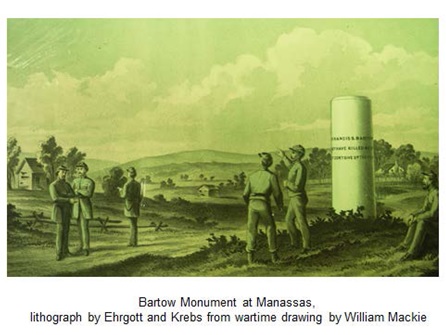
Fig. 2
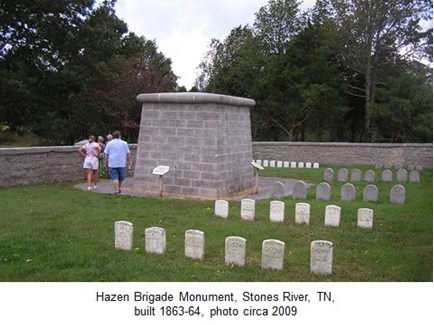
Fig. 3
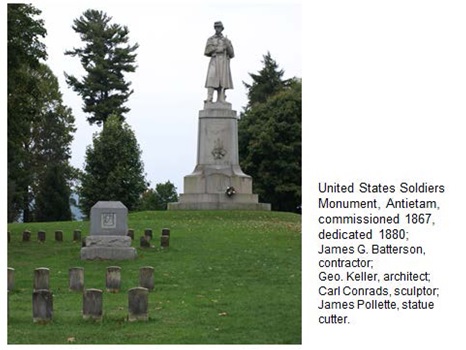
Fig. 4
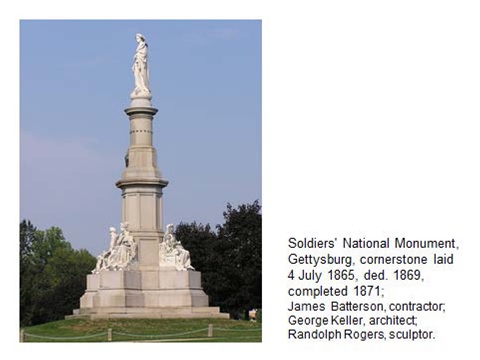
Fig. 5
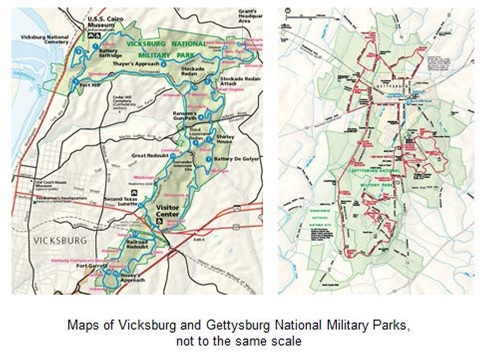
Fig. 6
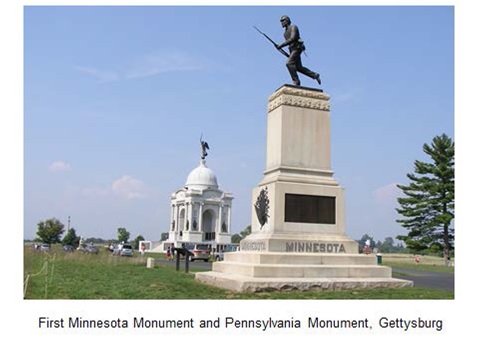
Fig. 7
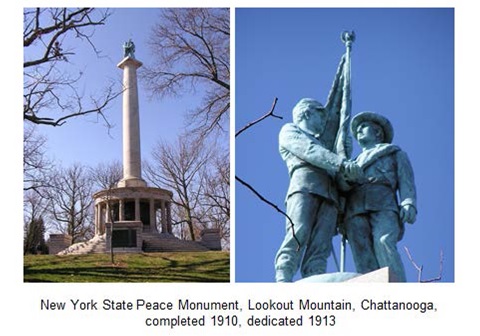
Fig. 8
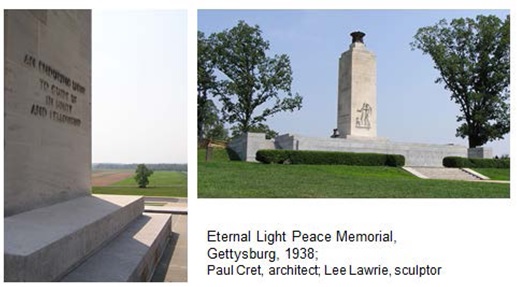
Fig. 9
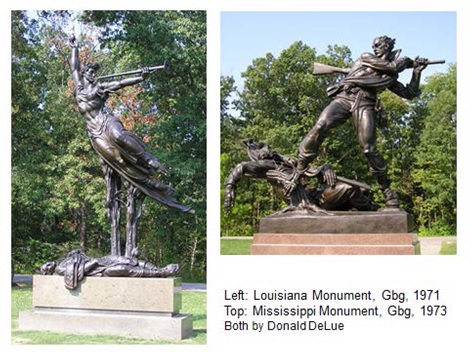
Fig. 10
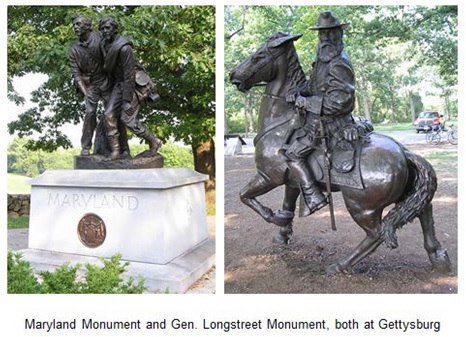
Fig. 11
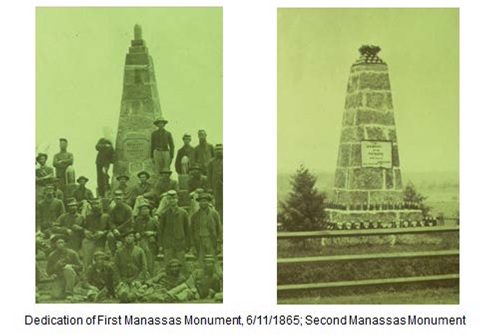
Fig. 12
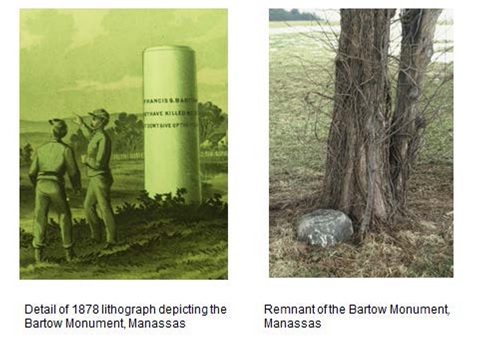
Fig. 13
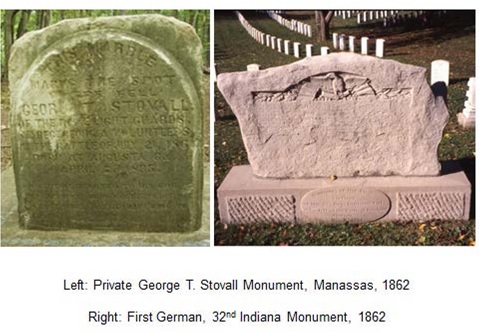
Fig. 14
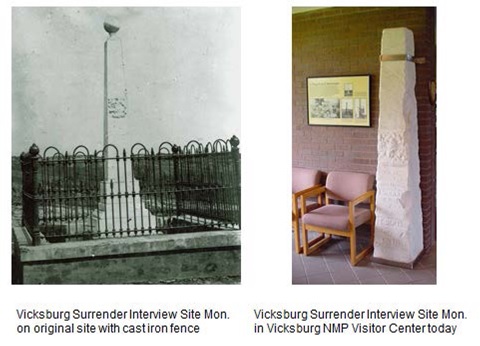
Fig. 15
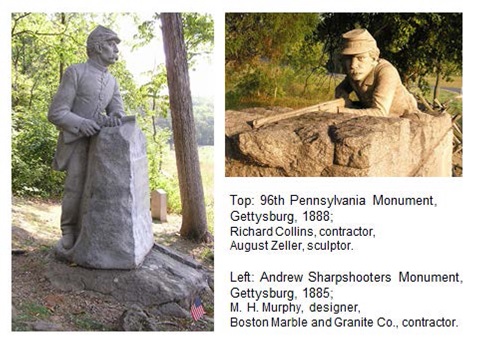
Fig. 16
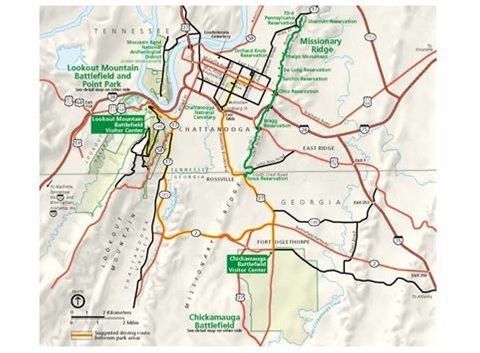
Fig. 17
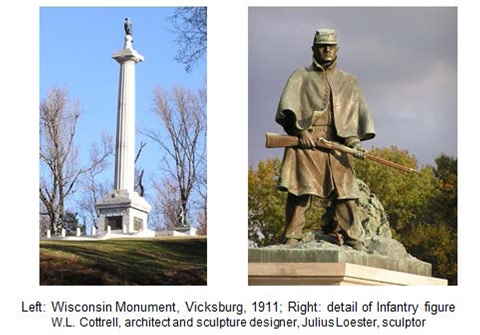
Fig. 18
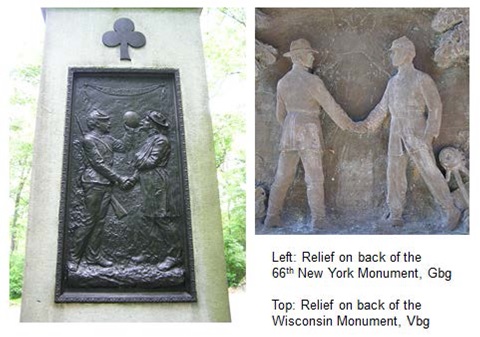
Fig. 19
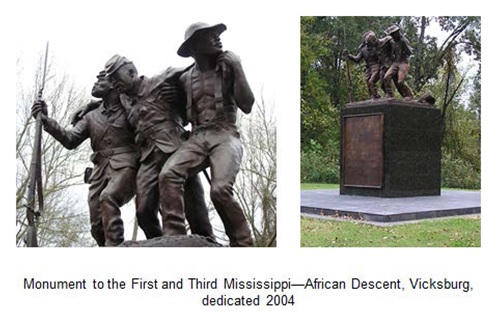
Fig. 20
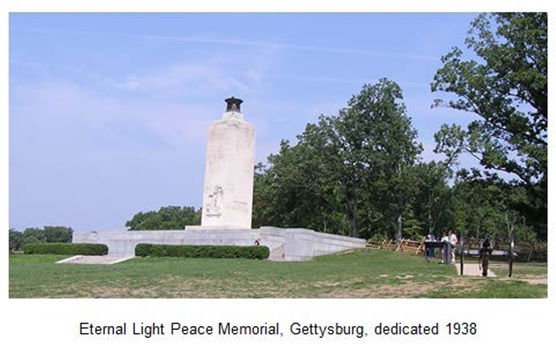
Fig. 21
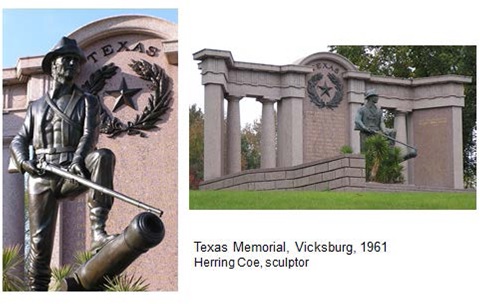
Fig. 22
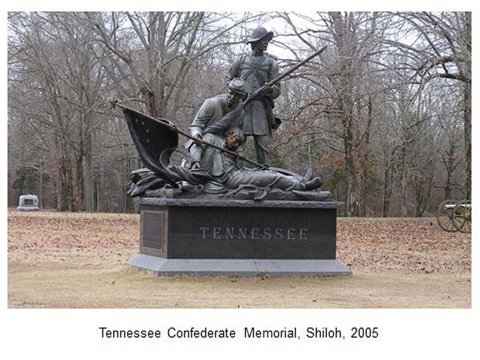
Fig. 23
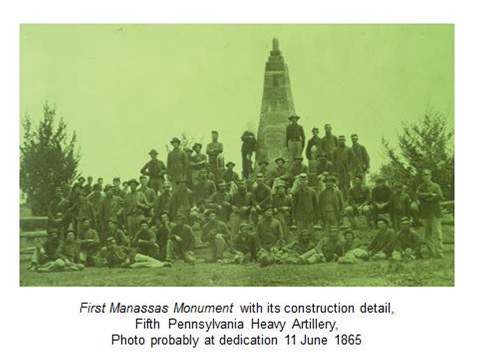
Fig. 24
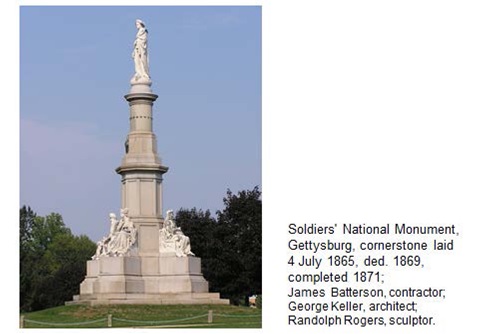
Fig. 25
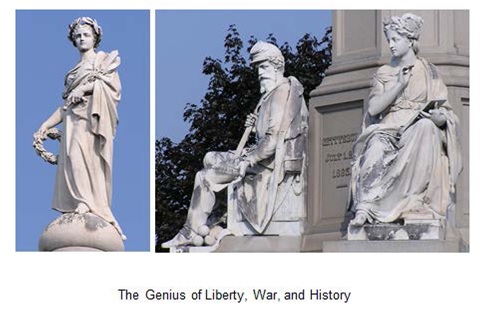
Fig. 26
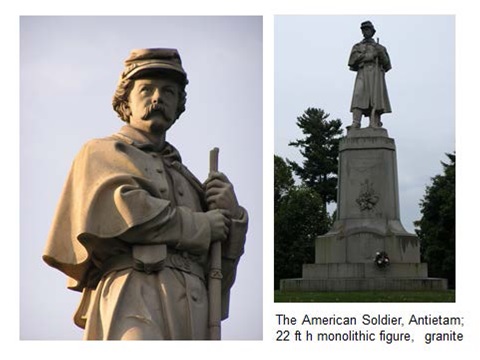
Fig. 27
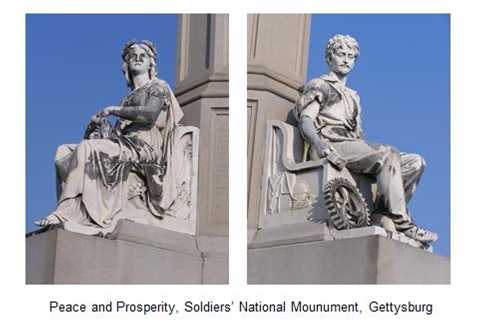
Fig. 28
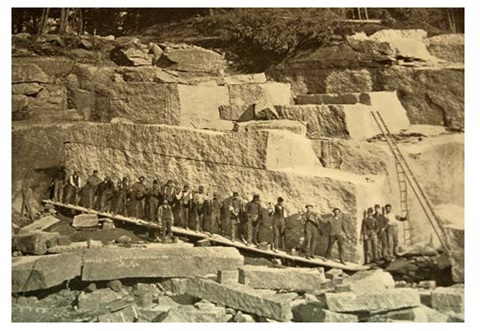
Fig. 29
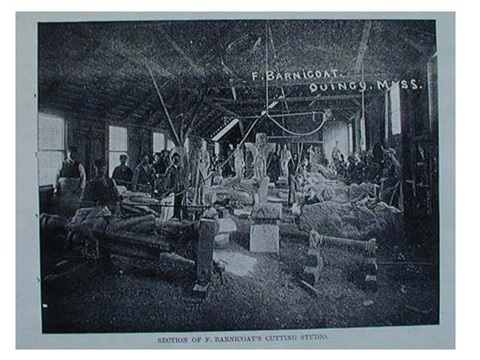
Fig. 30
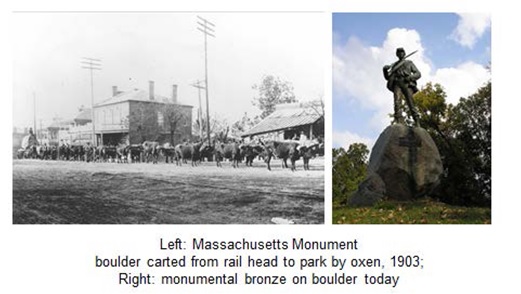
Fig. 31
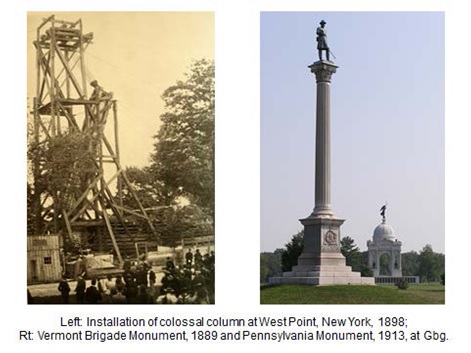
Fig. 32
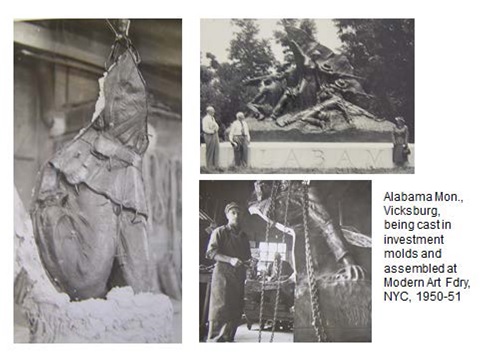
Fig. 33
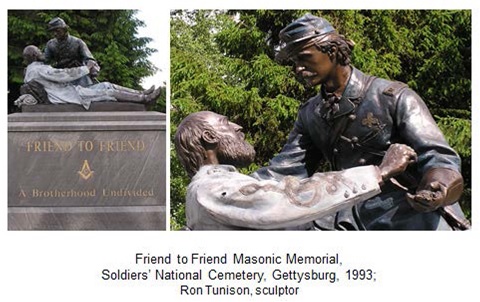
Fig. 34
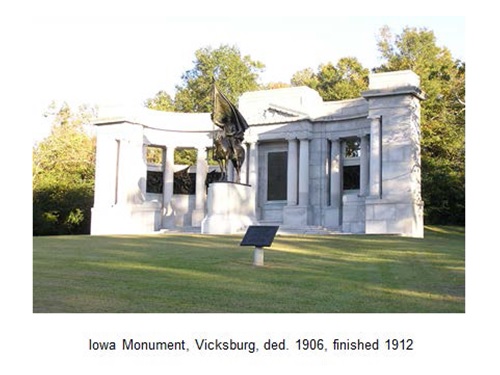
Fig. 35
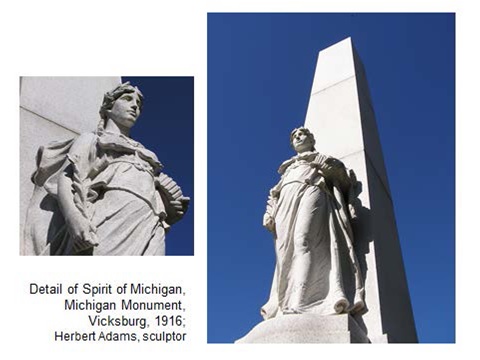
Fig. 36
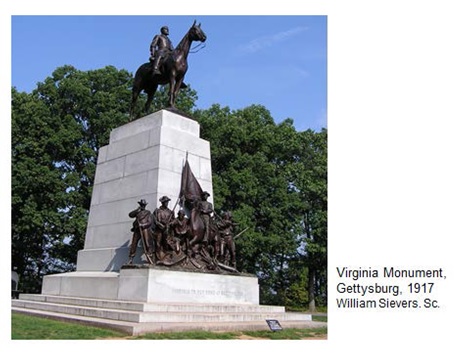
Fig. 37
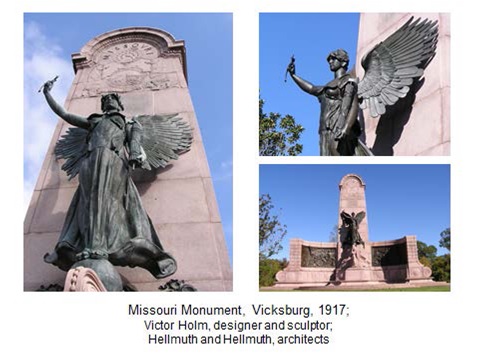
Fig. 38
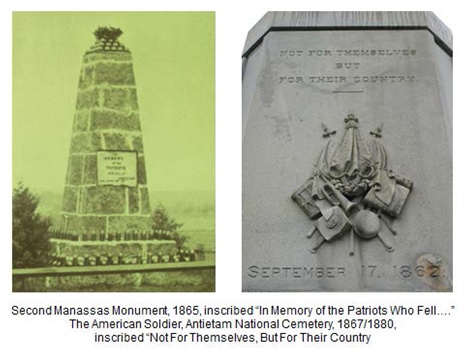
Fig. 39
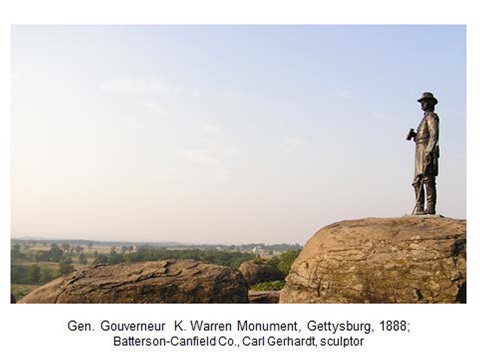
Fig. 40
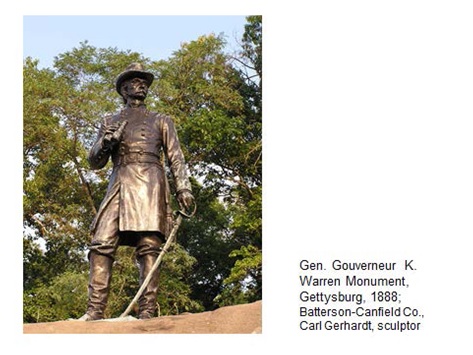
Fig. 41
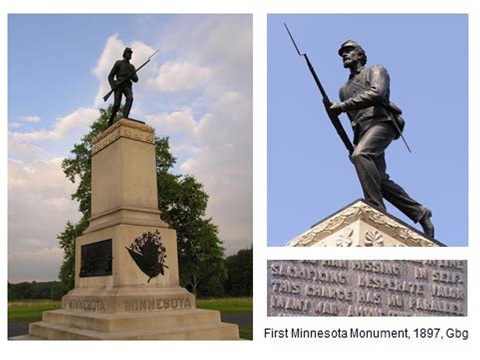
Fig. 42
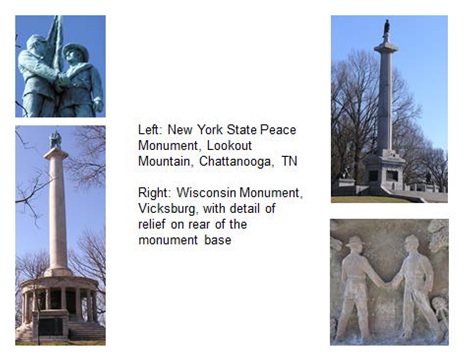
Fig. 43
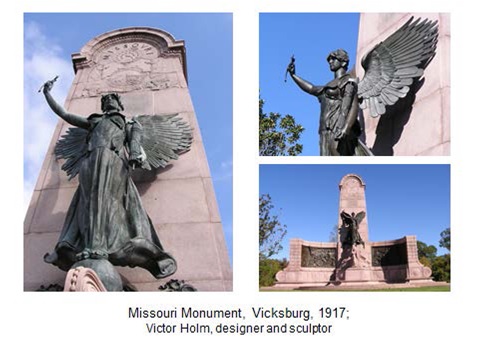
Fig. 44
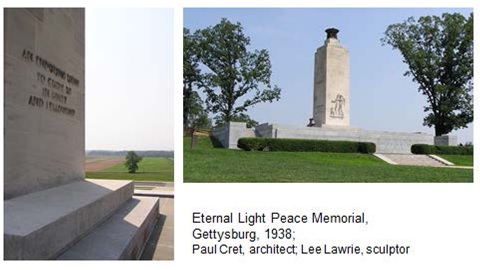
Fig. 45
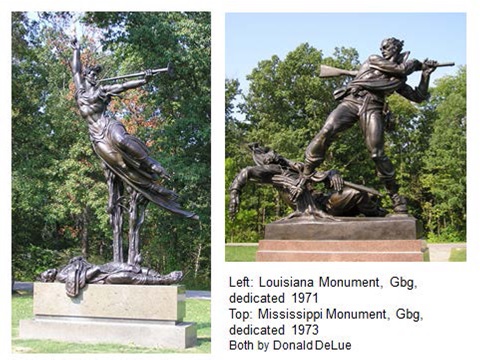
Fig. 46
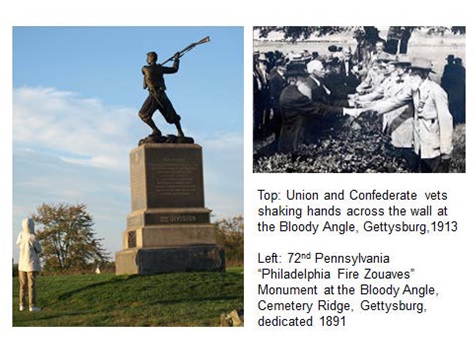
Fig. 47
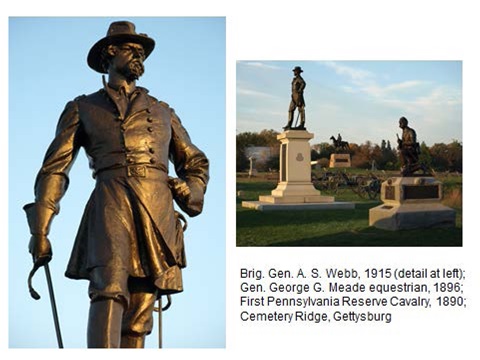
Fig. 48
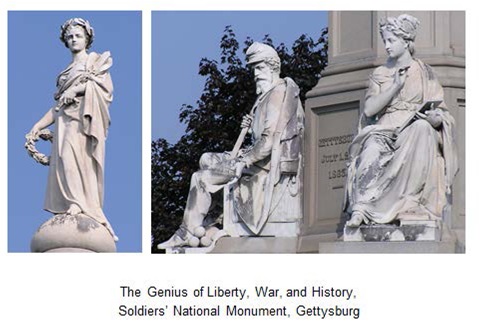
Fig. 49
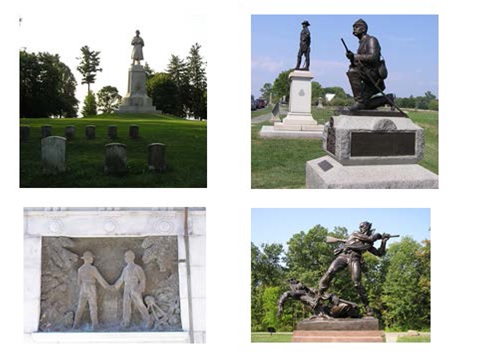
Fig. 50
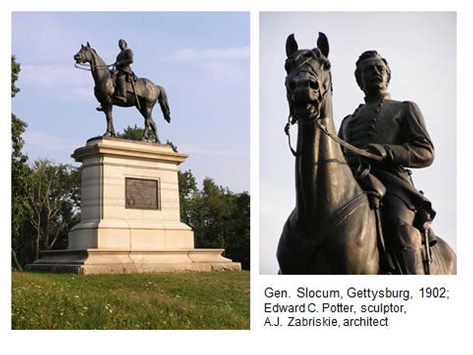
Fig. 51
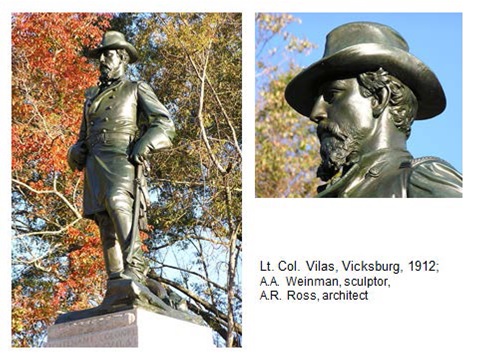
Fig. 52
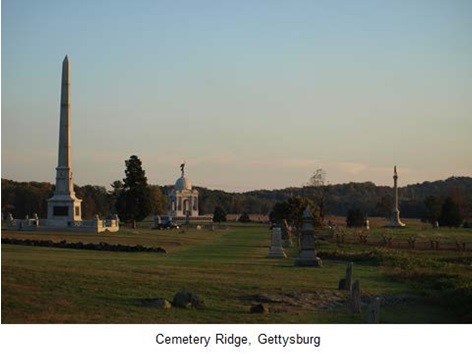
Fig. 53
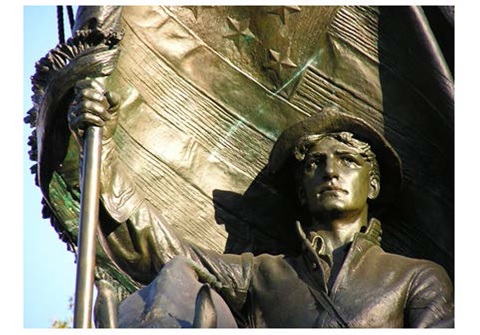
Detail of Iowa Monument, Vicksburg, Henry and Theo Alice Ruggles Kitson
- [1] The first quoted phrase is from the Gettysburg address and the second from the inscription on The Private Soldier Monument at Antietam National Battlefield Park (fig. 26).
If you can read only one book:
Panhorst, Michael W. The Memorial Art and Architecture of Vicksburg National Military Park. Kent, OH: Kent State University Press, 2015.
Books:
Abernathy, Alonzo, comp. Dedication of Monuments Erected by the State of Iowa Commemorating the Death, Suffering, and Valor of Her Soldiers on the Battlefields of Vicksburg, Lookout Mountain, Missionary Ridge, Shiloh, and in the Confederate Prison at Andersonville. Des Moines, IA: Emory H. English, State Printer, 1908.
Adams, Adeline. The Spirit of American Sculpture. New York: National Sculpture Society, 1929.
Brown, Daniel A. Marked for Future Generations: The Hazen Brigade Monument. Murfreesboro, TN: Stones River National Battlefield, 1985.
Commonwealth of Pennsylvania. Fiftieth Anniversary of the Battle of Gettysburg; Report of the Pennsylvania Commission, December 31, 1913. Harrisburg, PA: Wm. Stanley Ray, State Printer, 1913.
Craven, Wayne. The Sculptures at Gettysburg. Jamestown, PA: Eastern Acorn Press, 1982.
———. Sculpture in America. New and revised ed. Newark: University of Delaware Press, 1984.
Huntington, Tom. Guide to Gettysburg Battlefield Monuments. Mechanicsburg, PA: Stackpole Books, 2013.
Illinois-Vicksburg Military Park Commission. Illinois at Vicksburg – Published under the Authority of an Act of the Forty-Fifth General Assembly by the Illinois-Vicksburg Military Park Commission. Chicago: Blakely Printing, 1907.
Isbell, Timothy. Vicksburg: Sentinels of Stone. Jackson: University Press of Mississippi 2006.
———. Gettysburg: Sentinels of Stone. Jackson: University Press of Mississippi 2006.
Lee, Ronald F. The Origin and Evolution of the National Military Park Idea. Washington: National Park Service, 1973.
New York Monuments Commission for the Battlefields of Gettysburg and Chattanooga. Final Report on the Battlefield of Gettysburg. 3 vols. Albany: J. B. Lyon, 1902.
Nicholson, John P., ed. and comp. Pennsylvania at Gettysburg: Ceremonies at the Dedication of the Monuments Erected by the Commonwealth of Pennsylvania to Major. General. Meade, Hancock, Reynolds, & to the Positions of the Pennsylvania Commands Engaged in the Battle, 2 vols. Harrisburg, PA: Wm. Stanley Ray, 1904.
Panhorst, Michael W. “Lest We Forget: Monuments and Memorial Sculptures on Civil War Battlefields in National Military Parks, 1861-1917.” PhD diss. University of Delaware, 1988.
———. “ʻThe First of Our Hundred Battle Monuments,’ Civil War Battlefield Monuments Built by Active-Duty Soldiers During the Civil War,” Southern Cultures 20, no. 4 (Nov. 2014): 22-43.
Reaves, Stacy W. A History and Guide to the Monuments of Shiloh National Park (Charleston, SC: The History Press, 2012).
Savage, Kirk. Standing Soldiers, Kneeling Slaves: Race, War, and Monument in Nineteenth-Century America. Princeton, NJ: Princeton University Press, 1997.
Taft, Lorado. The History of American Sculpture. New York: The Macmillan Co., 1903.
Sellars, Richard West. Pilgrim Places: Civil War Battlefields, Historic Preservation, and America’s First National Military Parks, 1893–1900. Ft. Washington, PA: Eastern National, 2005.
Sloan, Katharine A., and Helen S. Schwartz. Vicksburg: A Photographic Journey with Voices from the Past. Langhorne, PA: Artistry in Photography 2008.
Smith, Timothy B. The Golden Age of Civil War Battlefield Preservation: The Decade of the 1890s and the Establishment of America’s First Five Military Parks. Knoxville: University of Tennessee Press, 2008.
———. A Chickamauga Memorial: The Establishment of America’s First Civil War National Military Park. Knoxville: University of Tennessee Press, 2009.
Vanderslice, John M. Gettysburg: A History of the Gettysburg Battle-Field Memorial Association. Philadelphia, PA: Gettysburg Battle-Field Memorial Association, 1897.
Veteran Organization of the Fifth New York Volunteers. Dedication Services at the Unveiling of the Bronze Statue of Maj.-Gen. G. K. Warren at Little Round Top, Gettysburg, Pa., August 8, 1888 (Brooklyn: Press of Brooklyn Daily Eagle Book Printing Department, 1888).
Organizations:
No organizations listed.
Web Resources:
Inventory of American Sculpture at the Smithsonian Institution is an on-line database cataloguing American sculpture in public and private hands.
This website documents the creation of the monument to the Ninth Regiment Connecticut Volunteers at Vicksburg, which was dedicated in 2008.
Other Sources:
No other sources listed.



